Nature Reserves, Laurissilva Forest and Ecological Parks of Madeira
Protected Areas and Parks
A natural beauty filled with a rich biodiversity of species of endemic flora and fauna, classified a World Nature Heritage Site by UNESCO in 1999. The Laurissilva Forest covers 15,000 hectares, 12,000 of which are in a Nature Reserve. Protected areas were created to conserve various species in danger of extinction and by October 1982 Madeira’s Regional Government had declared two thirds of the island a nature reserve for which it continues to provide protection and surveillance.
A natural beauty filled with a rich biodiversity of species of endemic flora and fauna, classified a World Nature Heritage Site by UNESCO in 1999. The Laurissilva Forest covers 15,000 hectares, 12,000 of which are in a Nature Reserve. Protected areas were created to conserve various species in danger of extinction and by October 1982 Madeira’s Regional Government had declared two thirds of the island a nature reserve for which it continues to provide protection and surveillance.
When Madeira was discovered in 1419 most of its land was forested. The settlers set fire too much of the Island to clear the land for farming. Today due to its pleasant climate most of the population is located in the south but the original forest is still found in the northern slopes and deep valleys of the island. This Laurel forest is composed of trees of the Lauraceae family and numerous counts of other plant species. The preservation of this environment is paramount; therefore no cattle or goats are permitted in these areas.
Other protected areas aside from the park include the Nature Reserves of the Desertas and the Selvagens Islands plus the marine reserves of Garajau and Rocha do Navio; all require special permission to visit.
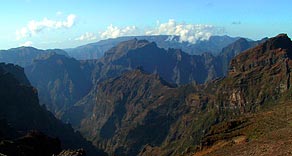 |
The Ecological Park is an area of natural heritage located north of Funchal, in Pico do Arieiro with outstanding views. The site occupies an area of 1,000 hectares that are especially rich in fauna and flora. This park offers excellent resources for education in geomorphology and biology and has often served as an open-air classroom. It has some important rare trees native to Madeira such as Mountain Ash, Lily of the Valley and Canary Laurel. A reforestation project was implemented restoring many native species belonging to Lauraceae family; an important conservation measure that has now turned into a regular event. In addition this park provides leisure space areas for visitors to enjoy |
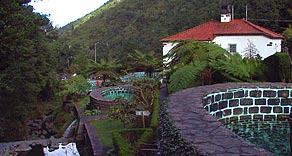 |
Ribeiro Frio Forest Park located north of Funchal is famous for its beautiful gardens and walks paths. This park is surrounded by a variety of native plants and tall trees all covering its mountains, take a walk through this nature park deep into the Laurissilva Forest and discover its true natural beauty. |
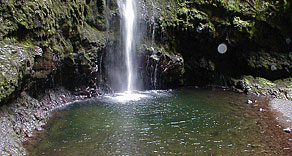 |
Queimadas Forest Park is on the west coast of Santana; a park surrounded by the Laurissilva forest with great paths and picnic areas. This park leads to a wonderful forest filled with the most dense and extraordinary vegetation; tall trees, flowers and famous paths such as Caldeirão Verde, Caldeirão do Inferno and Rancho Madeirense where you will find typical Santana houses and a restaurant. |
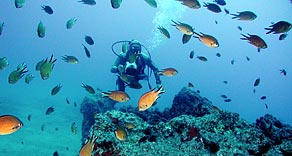 |
Garajau's Nature Reserve was created in 1986 and is located on the south east coast of Funchal. One of Madeira’s famous diving sites with a fantastic underwater richness of large fish species such as grouper, moray, manta rays, seahorses and much more, it’s an ideal spot for amateur diving and attracts many tourists to the area. This partial nature reserve area is protected and controlled, fishing is not allowed and only small boats can approach the beach. |
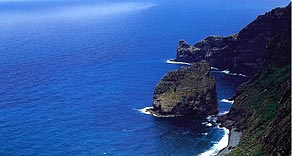 |
Rocha do Navio Nature Reserve also known as O ilhéu da Viúva is on the northeast coast of the Island in Santana and has been protected since 1997 due to the illegal fishing with explosives, which damaged the seabed and endangered the delicate marine ecosystem. Today this area is protected and has great scenery, boats are allowed but fishing nets and underwater fishing is not permitted. There are sea birds here such as the common Garajau and the Cagarra and it’s possibly a habitat for the return of the monk seal. |
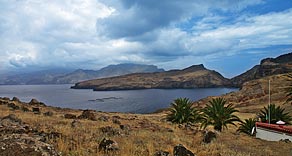 |
Ponta de São Lourenço Nature Reserve is located at the very eastern end of Madeira. Thanks to its geology, special and unique species of plants and local flora and fauna, this 9km long peninsula has been a protected reserve since 1982. In addition, aside from its vegetation it is also the home of many species of birds and even of some monk seals that are occasionally seen playing in the area. |
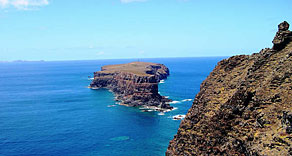 |
Desertas Island’s Nature Reserve located 22 miles southwest of Funchal lies a group of islands known as Deserta Grande, Bugio, Ilhéu Chão and Prego do Mar. In 1990, due to the nearly extinct monk seal population these uninhabited islands were declared a nature reserve. From the low point with only 6 or 8 animals in 1989 when they were one of the most endangered animal species on the world extinction list, the seals continue to make an incredible recovery with an estimate of 30 individuals at present. Special permission in advance is required in order to visit these islands, diving or sailing near the reserve is not permitted. Some commercial tours are available. |
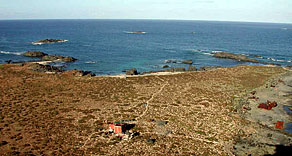 |
Selvagens Islands Nature Reserve (since 1971), is a group consisting of three small uninhabited islands; Selvagem Grande, Selvagem Pequena and Ilhéu de Fora, located 280km south of Madeira. These nature reserve islands have the most impressive and rarest endemic plants species and, due to almost perfect nesting conditions a great bird sanctuary. Special authorization is required in order to visit these islands although commercial tours are also available. |


























